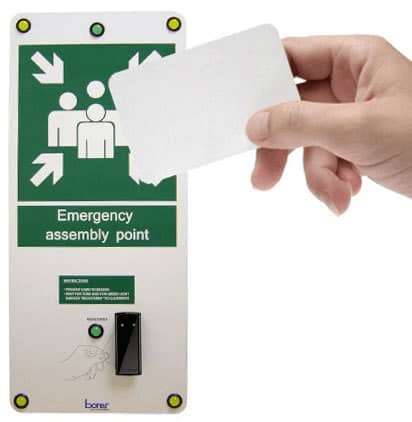Enhancing Emergency Evacuation Systems: Integrating 4G Routers and Access Control Points with iMuster
In an era where workplace safety and regulatory compliance are paramount, organisations are increasingly turning to technology to streamline emergency preparedness. A critical component of this is the mustering process, which ensures all personnel are safely accounted for during evacuations. Enter iMuster—a cutting-edge mustering application by Visitor Manager EU—designed to revolutionise emergency response. To maximise its effectiveness, integrating 4G routers with access control points (ACPs) at muster locations offers a robust solution for real-time data transmission, reliability, and scalability.
What is iMuster?
iMuster is a cloud-based emergency evacuation system that digitises the mustering process. By replacing manual headhunts with automated check-ins via RFID badges, QR codes, or mobile apps, it provides instant visibility into evacuation statuses. Safety officers can quickly identify missing individuals, streamline rescue operations, and generate compliance reports—all in real time.
The Challenge: Connectivity in Critical Moments
Traditional mustering systems often rely on local Wi-Fi or wired networks, which may fail during power outages or infrastructure damage. In emergencies, losing connectivity can delay accountability, risking lives and compliance penalties.
The Solution: 4G Routers + Access Control Points
By deploying 4G routers alongside ACPs at muster stations, organisations ensure uninterrupted data flow to the iMuster platform. Here’s how it works:
- 4G Routers as Connectivity Backbones
- These routers use cellular networks to provide internet access independent of local infrastructure.
- Equipped with failover capabilities, they automatically switch to 4G if primary networks fail, ensuring continuous operation.
- Ideal for remote sites (e.g., oil rigs, construction zones) or temporary events where traditional internet is unavailable.
- Access Control Points for Automated Check-Ins
- ACPs equipped with RFID readers, biometric scanners, or QR code systems capture evacuee data as they arrive at muster points.
- Data is instantly transmitted via 4G routers to the iMuster cloud, updating dashboards in real time.
Key Benefits of Integration
- Reliability: 4G networks offer broader coverage and resilience during disasters, minimising downtime.
- Real-Time Accountability: Safety teams access live updates, reducing manual errors and accelerating response times.
- Redundancy: Dual SIM routers or multi-carrier setups prevent congestion-related outages.
- Scalability: Easily deployable in diverse environments, from factories to festivals.
- Compliance: Automated logs provide auditable records for regulatory adherence.
- Security: Data encryption and VPNs protect sensitive information over cellular networks.
Use Cases
- Remote Industrial Sites: Offshore rigs or mining operations leverage 4G to stay connected in isolated areas.
- Large-Scale Events: Temporary muster points at concerts or conferences use portable ACPs and routers.
- Multi-Building Complexes: Hospitals or campuses ensure coverage across sprawling layouts.
Implementation Steps
- Assess Infrastructure: Identify muster points lacking reliable connectivity.
- Select Hardware: Choose industrial-grade 4G routers with VPN support and rugged ACPs.
- Integrate Systems: Sync ACPs with iMuster via APIs or middleware.
- Test and Train: Conduct drills to validate connectivity and train staff on new protocols.
Conclusion
Integrating 4G routers with access control points transforms iMuster into a fail-safe evacuation tool. By guaranteeing real-time data flow, organisations enhance safety, meet compliance standards, and protect lives when seconds count. In emergencies, connectivity isn’t just convenient—it’s critical.
Upgrade your emergency response today. Explore iMuster and discover how 4G-enabled solutions can future-proof your mustering process.

